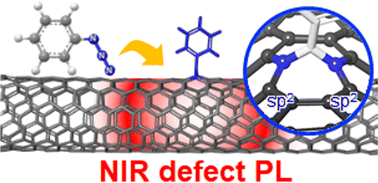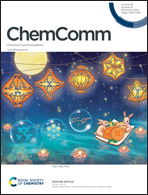Azide modification forming luminescent sp2 defects on single-walled carbon nanotubes for near-infrared defect photoluminescence†
Abstract
Azide functionalization produced luminescent sp2-type defects on single-walled carbon nanotubes, by which defect photoluminescence appeared in near infrared regions (1116 nm). Changes in exciton properties were induced by localization effects at the defect sites, creating exciton-engineered nanomaterials based on the defect structure design.



 Please wait while we load your content...
Please wait while we load your content...